Castles by the Sea is an abstract strategy puzzle type game where you try to build up your kingdom on the beach. Sand can be a tricky thing as there are kids stomping around, dogs running by, and kites that fly in the air until the wind stops. In this game you will need to build up your sand kingdom obeying placement rules, while navigating the hazards to penalize all other players and keeping your own structures and figures safe. The game is for 1-4 players, and takes under an hour to play. The game is published by Brotherwise Games, also known for Call to Adventure, Unearth, and Overboss. The game is designed by Jon Benjamin and Michael Xuereb, who have teamed up to make a 3d spatial puzzle game.
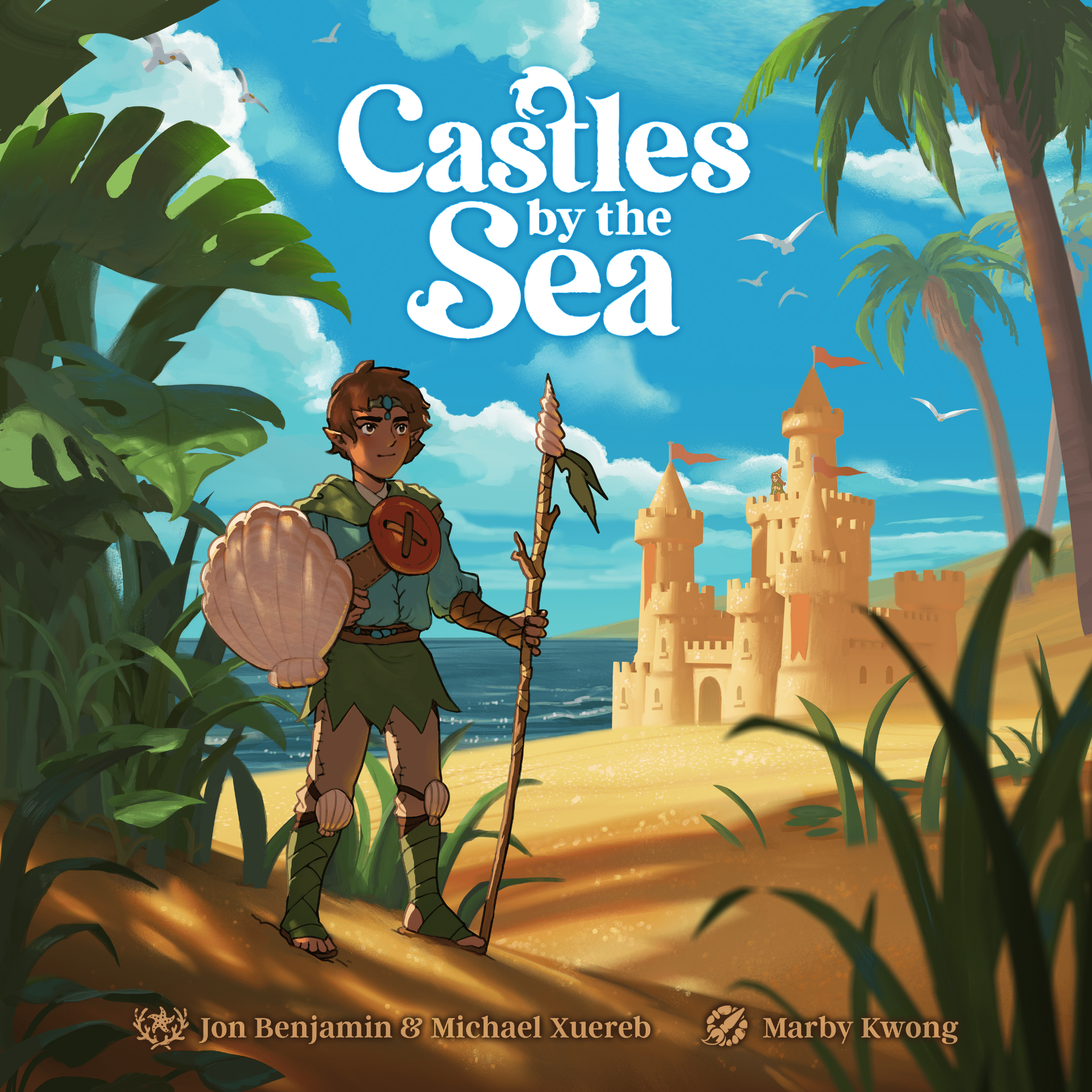
What’s in the Box?
- 4 Board edge pieces
- 1 Tide pool tile and 12 sandy tiles
- 20 Five sand dollar tokens
- 30 One sand dollar tokens
- 10 Ten sand dollar tokens
- 8 Seaweed tokens
- 4 Player mats
- 1 First player marker
- 1 Turn board and marker
- 36 Hazard cards of 6 types
- 6 Hazard pucks
- 50 Wooden sand blocks
- 8 Wooden stone blocks
- 48 Double-sided player cards
- 26 Castle cards
- 40 Wooden player pieces, 10 per kingdom
How’s it Play?
Players will have cards to begin the game that gives them mid-round objectives to help guide them during the game. Players will start their turn by gathering sand, which are represented by wooden blocks. The base amount each player gets is 3 minimum. If a player had previous pieces destroyed, then they could gain more.
Players then place these blocks out on the main board. When placing them out, each block will need to touch another block you placed this round. Strategically placing out your blocks is a huge part of the game. You can build on seaweed to gain additional points. You can build on top of your own blocks, or on the dark blocks which represent stones. But each turn, all blocks placed during that turn need to touch or connect with each other.
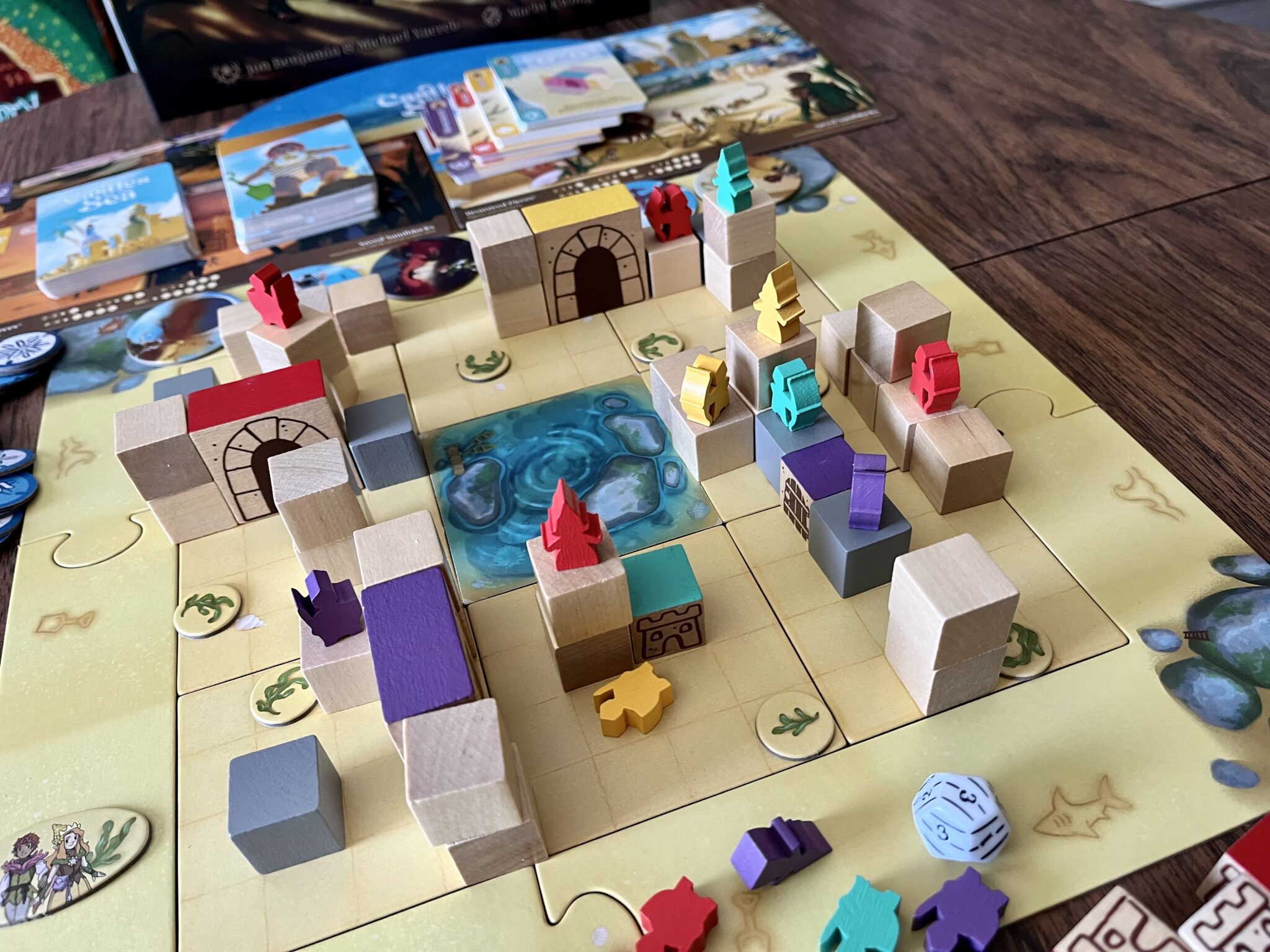
After placing out blocks, each player has their own figures or structures that they want to place out on the board to gain points. Each figure and structure have their own requirements that need to be fulfilled to allow them to be placed out. For all figures, they need to be placed out on top of a block you just placed the same round. Each card lists the number of points your figure or structure will score if it stay out on the board till the end of your turn.
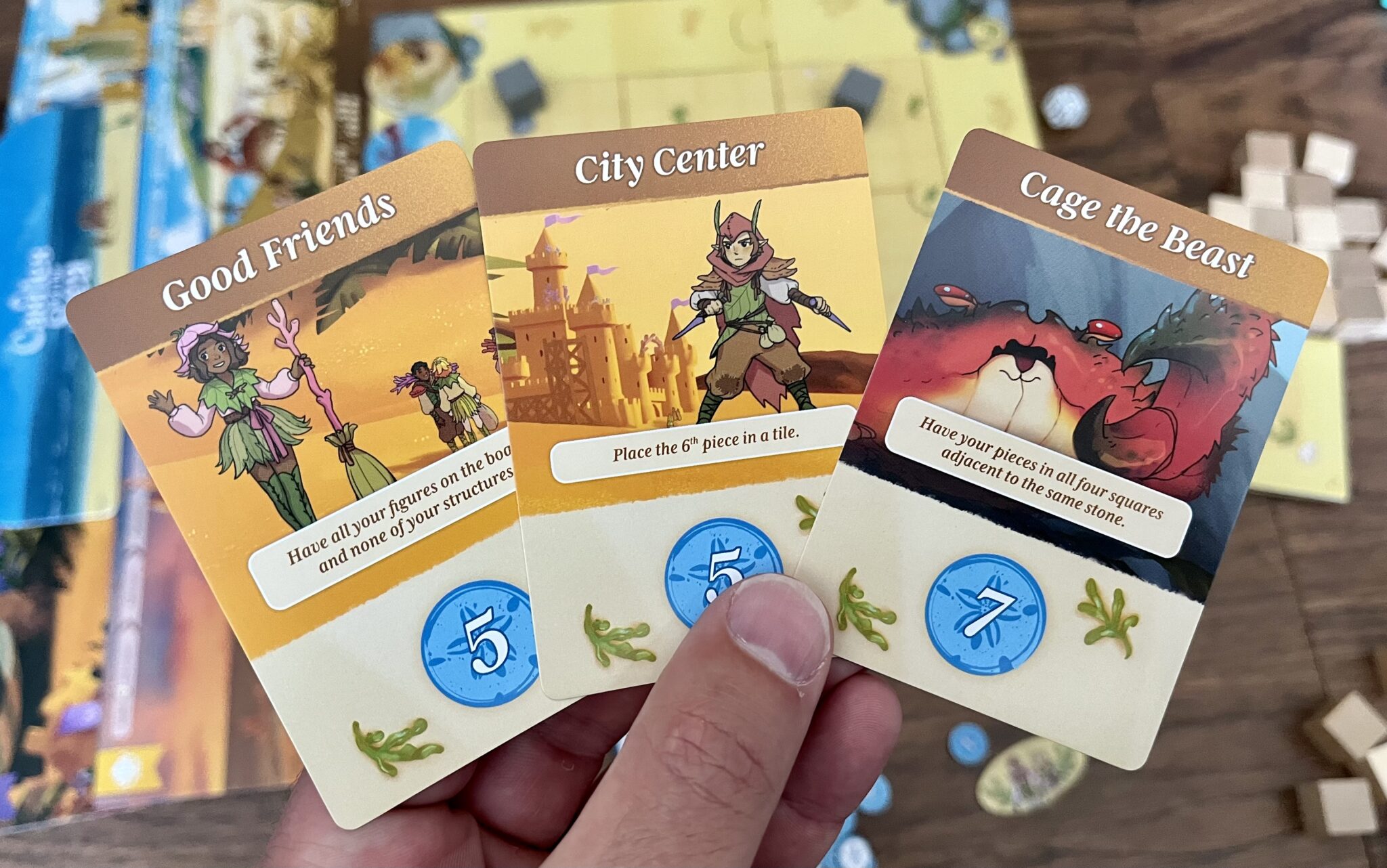
Pieces can be taken off the board at the end of each player’s turn due to 3 possible hazards. Each hazard starts on one side of the board, and the active player will choose one to move clockwise and then choose an empty row or column to place the hazard on. Depending on player count the active player will either choose one of the other 2 hazards that didn’t move to activate, or possibly in lower player counts, both hazards not moved are activated.
After flipping over a card from the unmoved hazards, if at least 3 alerts symbols are shown on one of the hazards, that hazard is activated. Each hazard will take off pieces in different ways listed on their card. After a hazard is activated it will move according to the symbol it’s currently on, to the next symbol clockwise. All cards are then shuffled back waiting to get 3 alerts to get activated again.
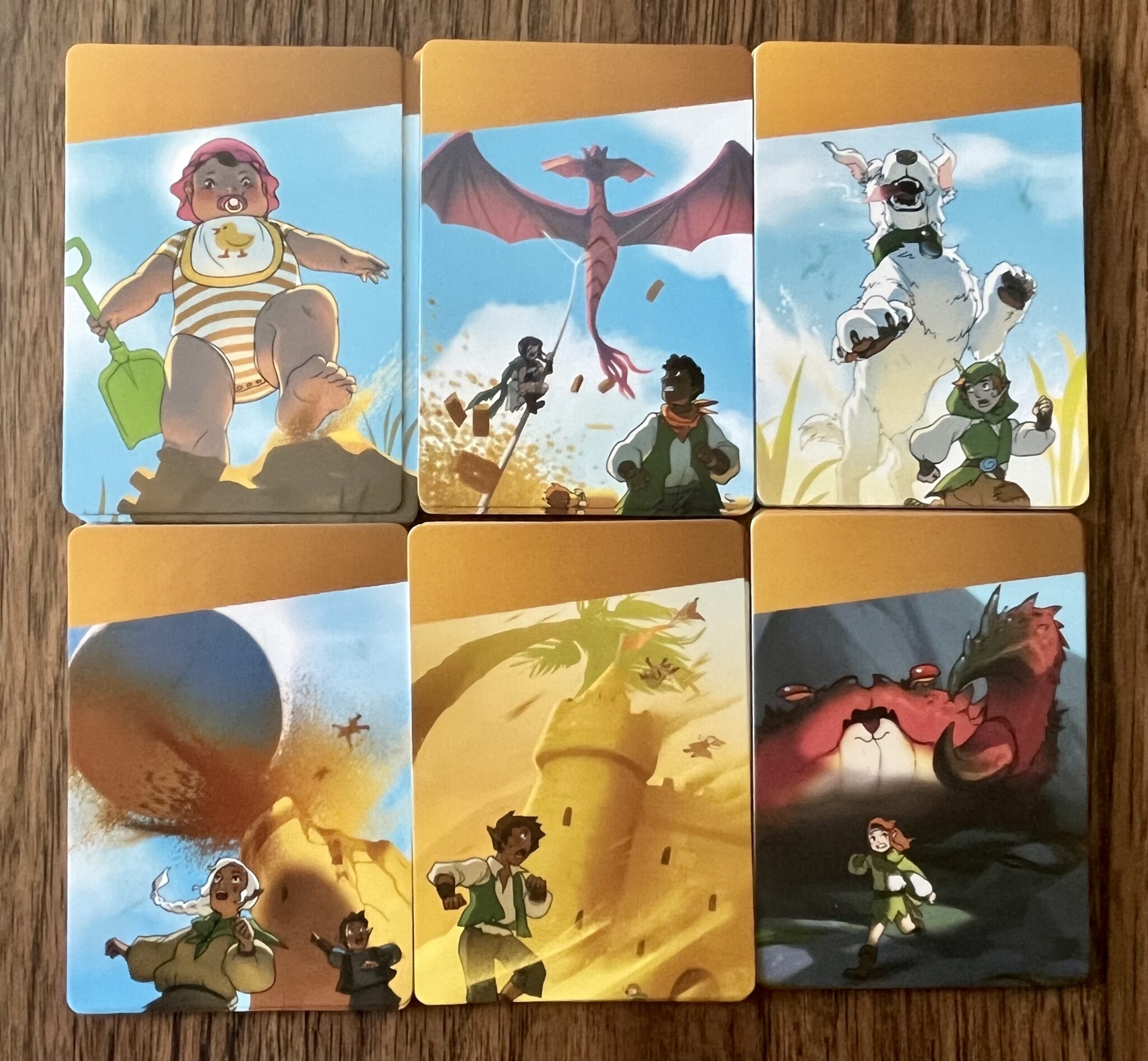
Play continues in a clockwise direction and players to continue the steps until the number of rounds in the game are over. The last round ends with players trying to trigger hazards and scoring one last time for any figures or structures left on the board. Players then count up their points, and the player with the most, wins the game.
The Verdict
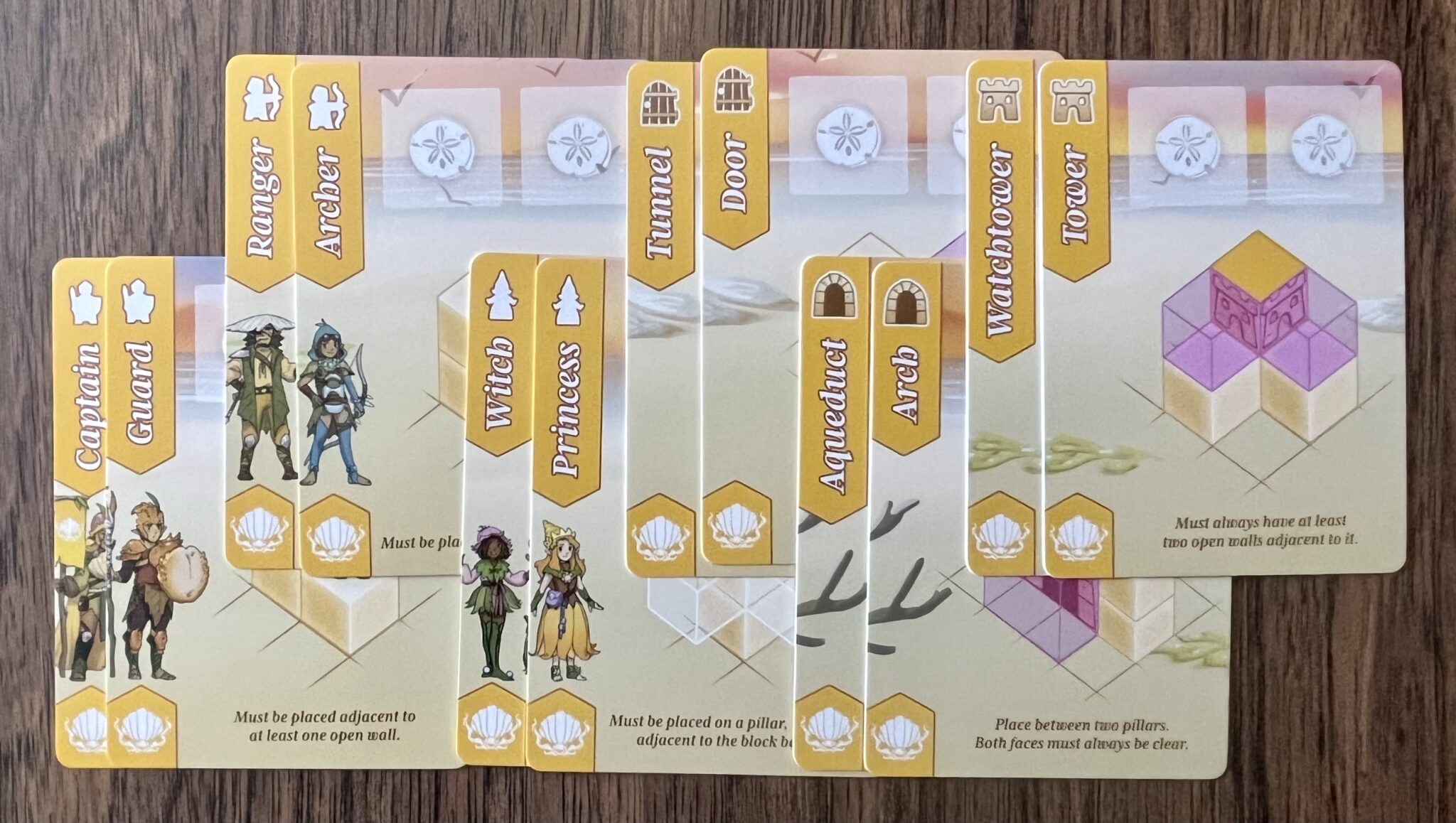
The box art and the theme makes the game look very interesting. The game looks good when on the table, and all those things invite you to check out this game. But, the gameplay is not what I initially expected for a game that presents itself like it does.
You are trying to place out blocks in a way to help you gain points by getting your pieces on the board. You also can strategically make this difficult for others by blocking or making it more difficult for them to setup their pieces and get them on the board. If players want, they can definitely decide to gang up on a specific player and make sure they don’t win the game. I usually don’t like that, and I don’t place that as a flaw in the game, that is more a problem for the type of players you might be playing with. The game also then adds in obstacles with the hazards that you will need to watch out for. You might not want to build next to another player as you can activate a hazard to knock down their pieces instead.
The game needs some more variability for my taste. But I have heard there will be a riptide expansion that might add something to the game that adds some push your luck elements and causes the game to be more exciting. The game can be predictable as is, and as you keep playing the game it is less and less exciting. The mid-round objectives can help to change strategy from game to game, but I still feel like the same thing is happening each game.
The game is pretty clear and simple for the normal gamer, but for beginners it might be hard as the specifics on the cards allowing you to place your pieces onto the board are specific. My kids, ages 8 and 6 also had a hard time following this. I feel like it would be a great fit for them, but there was just too much for them to fully grasp what’s going on, and not enough complexity for it to be a game we would enjoy at game night with adults.
The hazards help the game to be more strategic in trying to hinder other players and not hurt yourself at the same time. When you really understand the game, the hazards can be very important. The hazards also need to be setup using good timing and can’t just be a big move by moving it and activating it.
This is an abstract strategy game, and the theme does kick in more than a lot of other games of the same category. But ultimately the game is not enough complex and not enough variability for something that would keep coming out on my table, and there is too much going on with specifics for my kids to enjoy it on their table. I am hoping their expansion will help with one of both of these issues that I have, but it still might be worth a further dive if you like abstract strategy games that don’t get too overly complicated.
Images via Brotherwise Games
Have strong thoughts about this piece you need to share? Or maybe there’s something else on your mind you’re wanting to talk about with fellow Fandomentals? Head on over to our Community server to join in the conversation!

